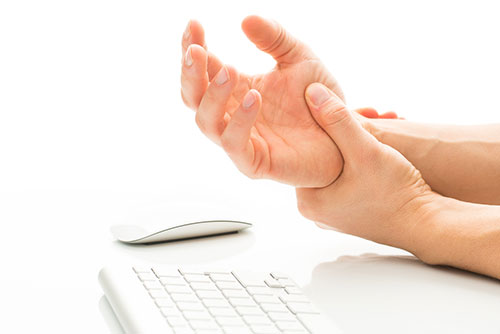
What is carpal tunnel syndrome?
Historically, carpal tunnel syndrome has primarily been attributed to overuse/repetitive motion of the wrist and/or hand. However, it’s felt that, from some patients, carpal tunnel syndrome is more congenital in nature, meaning that some individuals are simply born with smaller carpal tunnels. This means that the median nerve and tendons (which is what allow your fingers to move) pass through a narrow passageway in the wrist called the carpal tunnel which is much smaller for some people. When this part of the body is injured, swelling can cause the tunnel to press down on the nerve, resulting in numbness and tingling of the hand, pain, and loss of function.
What happens in carpal tunnel release surgery?
During a carpal tunnel release surgery, an orthopaedic surgeon will cut through the ligament that is pressing down on the carpal tunnel, allowing for more room for the median nerve and tendons to pass through the tunnel – this typically improves pain and restores function. There are two types of carpal tunnel release surgery – the traditional method is the open release, in which the surgeon cuts open the wrist to perform the surgery; the newer method is endoscopic carpal tunnel release, in which a tube that contains a camera is inserted through a tiny incision. The camera guides the doctor as he or she performs the procedure.
What is the recovery like for carpal tunnel release surgery?
Following surgery, your wrist will likely be in a heavy bandage or a splint for about a week. Doctors usually schedule another appointment to remove the bandage or splint. The recovery process itself can take several weeks to several months and, once the splint and/or bandaging has been removed, the next step in the process involves physical therapy to strengthen and heal the wrist and hand. During physical therapy, you will be provided with motion exercises to improve the movement of both your wrist and hand. These exercises are designed to help speed healing as well as strengthening the damaged body parts.
If hand and wrist pain are something that you’ve been dealing with – be it due to carpal tunnel syndrome or something else – please don’t hesitate to give us a call. Dr. Hurlbut and Dr. Machado here at Prairie Orthopaedic and Plastic Surgery, PC both specialize in treating the upper extremities.
source: hopkinsmedicine.org

